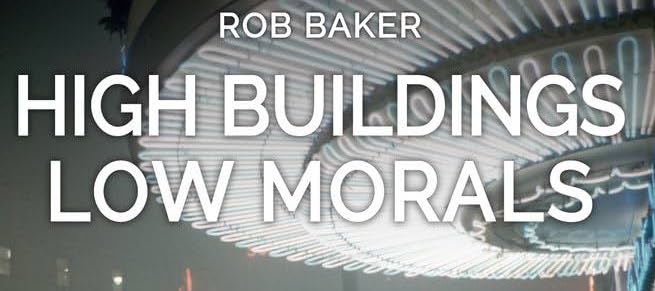
[This review was first published on The London Society website in November 2017]
Fans of Rob Baker’s blog ‘Another Nickel in the Machine‘ and his earlier collection of tales of the West End of the 20th century, ‘Beautiful Idiots and Brilliant Lunatics‘ will not need any further recommendation to buy his new selection of stories of the characters – performers, club owners, crooks and hangers on – from London’s night life.
The title comes from a Noel Coward quote (and Coward is a recurrent visitor throughout the book) “I don’t know what London’s coming to – the higher the buildings, the lower the morals.” and provides a dozen cause celebres of the last century – huge stories in their time that filled acres of newsprint – which have now been completely forgotten.
There’s Tallulah Bankhead seducing schoolboys at Eton (“We don’t at all mind you taking some of the senior boys over for a smoke or drink or a little sex on a Sunday afternoon. That doesn’t upset me. What does upset me is you giving them cocaine before chapel.“) Or Lord Boothby – formerly Parliamentary Private Secretary to Winston Churchill – and his deeply suspect ‘friendship’ with Ronnie Kray, or the drug-related death of the actress Billie Carleton in 1918.
But these headline tales are really only the starting point for entertainingly discursive journeys through the society and associates of the principals, so the story of Margaret, Duchess of Argyll (nee Sweeney, nee Whigham), takes in Mussolini’s visit to London in 1922 (“He really is quite absurd“, opined the Foreign Secretary, Lord Curzon); the raffish clientele of the interwar Embassy Club; P G Wodehouse and Barbara Cartland, and the 1920s love triangle involving Jessie Matthews, Evelyn Laye and Sonnie Hale also gives us, inter alia, the background of Peppino Leoni and his Dean Street Quo Vadis restaurant.
Great stories abound, such as Terry-Thomas (then plain Thomas Stevens) taking his first job as a transport clerk at Smithfield and turning up for work wearing “an olive-green pork pie hat, a taupe double-breasted suit decorated with a clove carnation, a multi-coloured tie and yellow wash leather gloves, twiddling a long cigarette holder and twirling a silver-topped malacca cane“. Or Graham Greene wandering Soho on ‘The Wednesday’, the worst night of the West End Blitz, looking for somewhere to eat. Baker’s other twitter account is Flashbak, photographs he has unearthed in various archives, so as you might expect, High Buildings, Low Morals is wonderfully illustrated with black and white pictures – publicity shots and movie stills of performers, advertising fliers and newspaper photos of the period. Despite some subediting infelicities this is a great read for any fan of social or entertainment history, or for anyone who just loves an anecdote.
